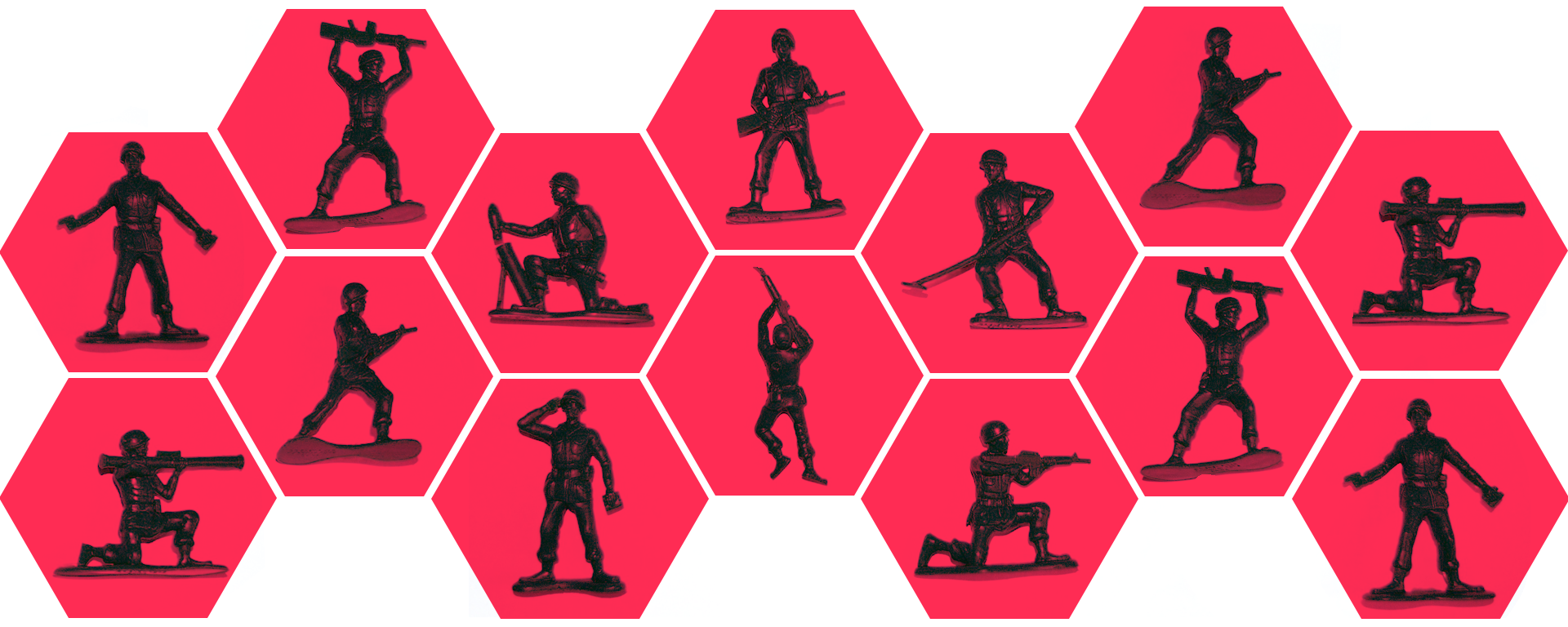

Yuna Wong wasn’t a wargamer when she first walked into the Connections Wargaming Conference five years ago, but that didn’t stop the former Marine Corps operations analyst from feeling right at home. “I just stood there watching these middle-aged white men with baseball caps hunched over miniatures, and I had this overwhelming sense that I had found my people,” she says.
Now a policy researcher at the Rand Corporation, a nonprofit think tank that has advised government and the private sector for generations, Wong found a new path that day. “If these are my people, what is it that they do, and how do I become one?” she wondered.
What she discovered was much more than just a game. Since the early 19th century, the loose collection of military thought experiments known as wargames has been informing commanders on the eve of battle and at the height of cold wars. Wargames have guided significant tactical and strategic decisions in conflicts including World War II, the 2003 invasion of Iraq, and undoubtedly others we don’t even know about. Now, as part of a new emphasis at the Department of Defense on using innovation to sustain the United States’ military position in the world, wargaming is set to play a bigger role than it has in decades.
But as the province of a bunch of “middle-aged white men,” who for the most part came to wargames first as a hobby, the discipline is in sore need of younger and more diverse practitioners to fill out a roster that is increasingly “hair-pigment challenged,” as one person put it. So if wargames are to remain as useful as they’ve become, the question Wong wants to answer is, how do we train a new generation of these grognards?

“Done right, wargaming has saved lives,” says Colonel Matt Caffrey. Wargames coordinator at the Air Force Research Laboratory at Wright-Patterson Air Force Base in Ohio and a founder of the Connections Conference, Caffrey has made wargames the focus of his career for more than 35 years. “At the end of the day, it’s all about more young American men and increasingly women coming home safe with all their limbs from combat, because we’ve learned from our mistakes and have done better on the actual battlefield,” he says.
In fact, engagements in which wargames have saved lives–on one or both sides of a conflict–are not hard to identify. Wargaming is widely credited with helping the U.S. Navy prevail in the Pacific during World War II. Admiral Chester Nimitz, who commanded the Pacific fleet, is quoted as saying, “The war with Japan had been re-enacted in the game rooms [at the Naval War College] by so many people and in so many different ways that nothing that happened during the war was a surprise–absolutely nothing except the kamikaze tactics towards the end of the war; we had not visualized those.”
More recently, the U.S. Army’s V Corps, which spearheaded the 2003 invasion of Iraq, chose its route to Baghdad–over 370 miles [600 kilometers] of desert west of the Euphrates River–after then-Lieutenant General William Scott Wallace participated in wargames showing that a more direct route through the southern cities along Iraq’s Highway 1 would have been “very, very bloody,” according to Caffrey.
“Wargames help us fight smarter, hence get closer to our ideal form of victory.”
Caffrey also believes wargames can save civilian lives, as well as the lives of combatants. “The U.S. and our allies typically try to win our wars fast, with as few casualties overall and with the least destruction as we can,” he says. “This is because such victories produce a better state of peace. Wargames help us fight smarter, hence get closer to our ideal form of victory.”
While the practice has helped commanders discover and determine the tactics they’ll employ on the field of battle, it also helps the Pentagon decide on weapons programs that can cost billions of dollars. The Office of Net Assessment (ONA), the Pentagon’s internal think tank, is tasked with looking at the nature of conflict 20 to 30 years into the future. Wargaming in various forms is one of the principal tools that ONA analysts use to understand what sorts of systems the United States may need to start developing now to stay ahead of a global security scene that’s rapidly and constantly changing.
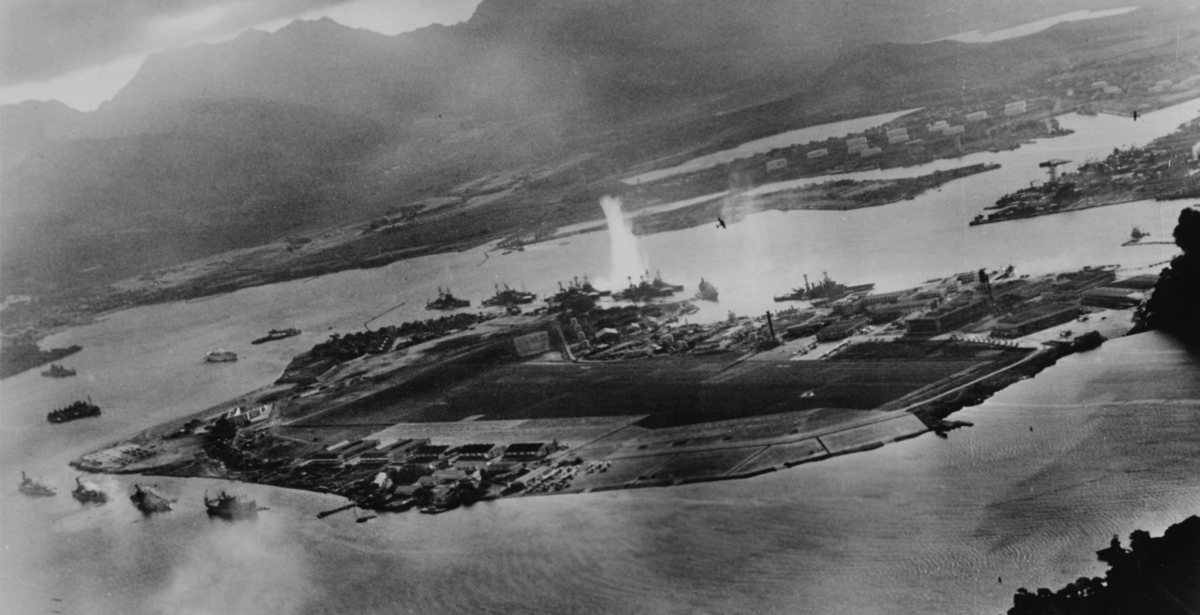
Of course, for wargames to be effective, their lessons must be given appropriate weight. One case in which this didn’t happen was Pearl Harbor. In live wargames held in 1932, Rear Admiral Harry Yarnell sent more than 150 planes to attack the fleet anchored there, with surprising success. Though the exercise’s AAR (after-action report) recommended a number of changes to naval tactics, the Navy declined to take note, according to Caffrey. Nine years later, Japanese warplanes would attack–from approximately the same direction and with the same target set–and achieve a similar level of success. After the war, the Joint Congressional committee investigating the attack made a set of recommendations very similar to the 1932 AAR.
“Two of the biggest problem with wargames are that outcomes are being taken too seriously, and that outcomes are not being taken seriously enough,” Caffrey says. “You can never prove what’s going to happen in the future. A wargame never proves anything. In fact, if a contractor says this wargame proves you should buy my product, run screaming.”
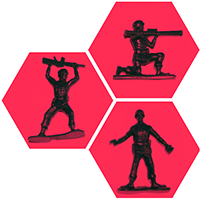
For aficionados like me, hobby wargames are a chance to flex their problem-solving muscles and fire their imaginations. Show me a board covered with tessellated hexagons and I’m immediately transported back to the 1970s, the last golden age of hobby wargaming, when my 10-year-old attention span could be stretched for hours by pushing dozens of cardboard counters around a detailed rendering of a town on the eastern front of World War II (in a game like Squad Leader, for instance), or sending a line of 28-millimeter lead chasseurs to ride down a routed enemy infantry unit and save the day for the French at Waterloo.
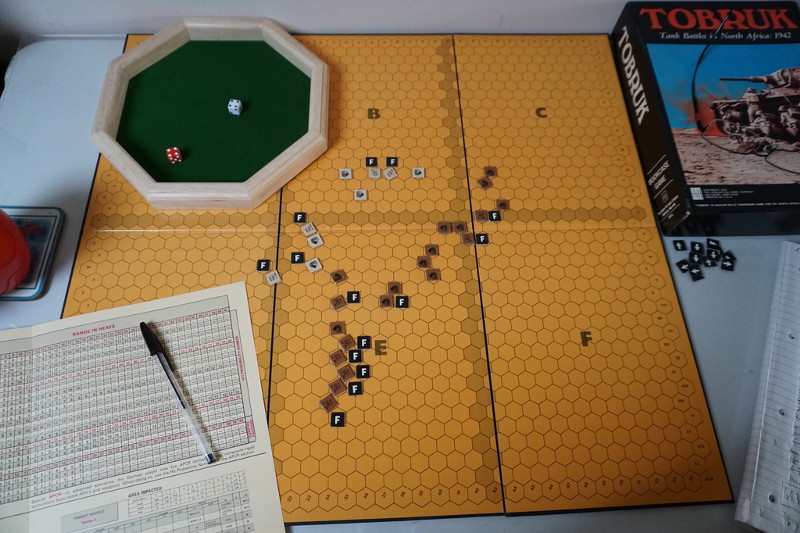
Today’s modern military wargames are both more varied and more constrained. At one end of the spectrum lie elaborate computer simulations that take many months to create (and many taxpayer dollars); at the other, you’ll find what are often called BOGSATs–a Bunch Of Guys Sitting Around a Table. Or, as Wong calls them, BOGGSATs–a Bunch Of Guys and Gals.
Many current professional military wargames bring in elements of all of the above. Dozens of people may be focused on an elaborate tabletop game governed by rulebooks that can run to 100 pages or more. The opposing sides of the conflict generally occupy separate rooms and view a map–or in some cases a screen–not unlike a hobby game with counters or other symbols representing troops and other elements of the situation (abandoned gun emplacements, for instance, or pockets of civil unrest).
One or more referees process the orders for each move (which might represent anything from a couple of hours to a couple of weeks), often entering them into a computer simulation which calculates results and then reports to each side only those facts (or presumptions) it would reasonably have in its possession. The cost to mount the biggest such games can run to seven figures.
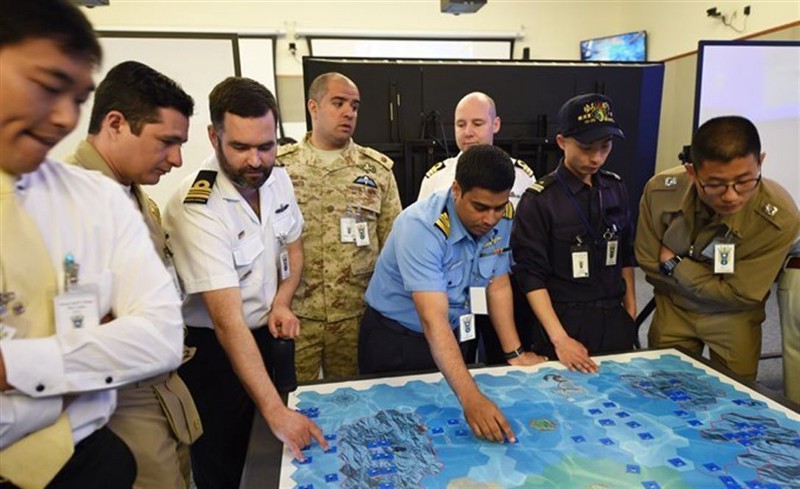
Despite the cost, wargaming experts will tell you that any exercise is only as good as its participants. “Putting people in an adversarial relationship with a thinking opponent is incredibly valuable,” says Rex Brynen, a professor of political science at McGill University in Montreal and founder of the PAXsims blog, who has designed and run wargames for organizations like the Atlantic Council, among others.
“Wargaming is really focused on the decisions that people make and the beliefs that underlie those decisions,” says wargaming expert Peter Perla. Principal Research Scientist at CNA, a think tank (formerly known as the Center for Naval Analyses), Perla literally wrote the book on wargaming. His 1990 treatise The Art of Wargaming more or less set the ground rules for what professional military wargaming is and isn’t. (Practitioners differ as to whether live troop exercises fall into the category of wargames; Perla excludes them.)
The United States is not alone in its renewed interest in wargaming. Caffrey cites more than two dozen countries that have used or explored the craft in recent years. When Major Tom Mouat, the staff officer responsible for simulation and modeling at the Defence Academy of the United Kingdom, lectured to Chinese military personnel on computer simulations recently, no more than 30 people attended, “which is pretty good,” he says. When he spoke on “manual wargaming,” he got 200 students and 50 senior staff.
One of the reasons wargames work so well, according to Perla, is that the collaborative storytelling process gives players a “you are there” feeling that brings out their best thinking, and helps them internalize the experience and make it part of their problem-solving toolset for the future.
One of the most eminent of the craft’s eminences grises, Perla is also one of the grayest: “A lot of the really knowledgeable master wargamers, we’re getting up there in years,” he says. “I’m sort of semi-retired now, and I’d like to be more than semi soon. We’ve got to build the cadre of people who really understand what wargaming is, how to do it, and how to use it.”
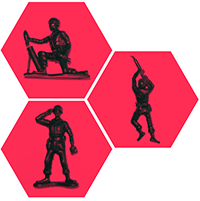
The rediscovered emphasis on wargaming at the Department of Defense is driven in part by the need to keep pace with technology. Mouat, who is also “beyond normal retirement age,” points out that equipment and training for individual soldiers has seen significant advances in recent years. “But when it came to the strategic thinking, that has been more difficult,” he says. “So, how do you train people to think?”
Given that wargaming informs decisions about who may live and who may die, it’s not an idle question. “Previous generations would play wargames as kids and that’s how they became professional wargamers,” says Wong. But as videogames edged out board games in the 1980s, that kind of hex-based childhood has disappeared. “There’s no pathway into it,” Wong says. “Especially since you can’t go back in time and spend your entire adolescence in hex gaming.” Wong tried, though. After finding her people, she started inviting friends over to her apartment to play consumer board games like Dominion and Ticket to Ride. “I was trying to pick up those skills in a very clumsy way,” she says.
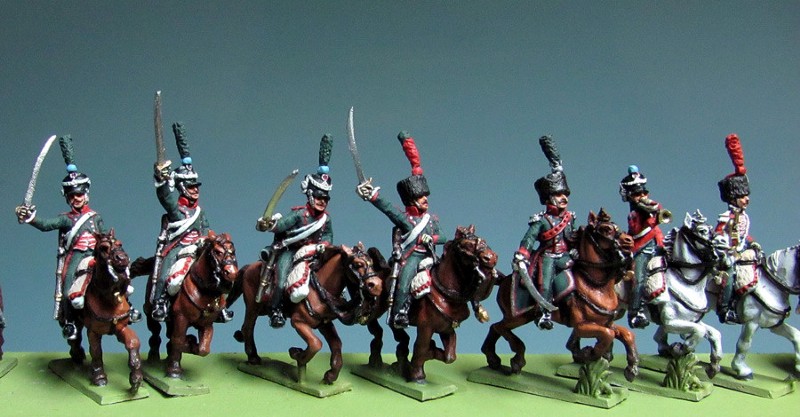
Wong’s quest to become a master wargamer has clearly grown into something deeper than simply a fascination with games. She is now on the board of the Military Operations Research Society and is co-chair of the think tank’s annual special meeting on wargaming.
“Up to this point, only a few people have been able to get the 10,000 hours of meaningful practice in running and designing games,” she says. “So how do you create the journeymen and apprentices from the beginners?”
Wong would like to find an academic institution interested in creating a master’s degree in wargaming. “The traditional DoD wargaming crowd has been drawn from three camps: political scientists, military planners, and operations research types,” Wong says. “But we are missing entire other disciplines, like sociology and psychology. We lack basic theory, and case studies in organizational learning and the way wargaming has interacted with that. We lack so many basic things as a field in terms of our knowledge. I’m trying to find individuals who will literally do their dissertation on this, and be able to explore those frontiers and add that knowledge back.”
Wong and others hope the advances made in the field are not lost as its popularity waxes and wanes. “One reason some of us are trying to set up something academic outside of DoD is so that it can progress, and not on a potential boom and bust cycle,” she says.
Brynen agrees. “If we don’t build wargaming skills into junior officers, all of this is going to be rather temporary.”
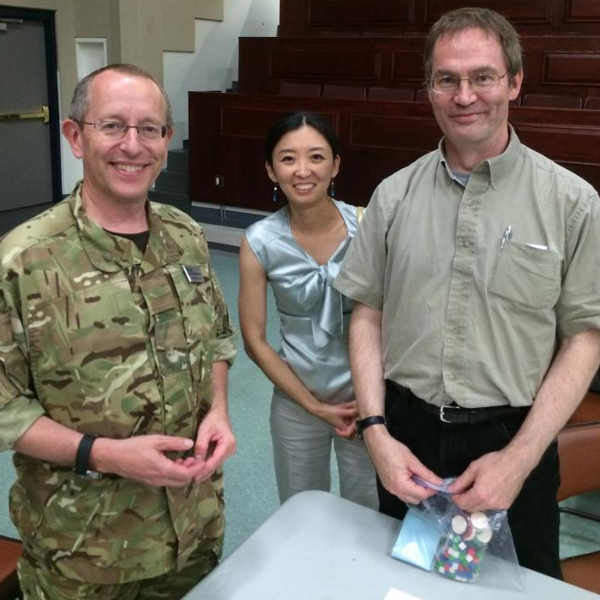
There’s something poignant about passing the torch to a new generation of wargamers trained in ivory towers rather than living rooms, as almost everyone I spoke to for this article struck me as rather sweet. A more rigorous approach is clearly needed, and could also help address some questions that even the experts have. “Wargames create that environment in which people will start to think more broadly about a problem, think in an indirect manner, and generate original and unusual solutions,” says Mouat. “But there is the issue of whether manual wargaming begets original thought, or whether organizations that engage in original thought tend to have wargaming.”
For some, the rigor of an academic program doesn’t go far enough. Caffrey is a fan of Wong’s quest, but sees a use for wargaming even on the battlefield. “We need military, deployed in war zones, who are capable of recognizing fast when our adversaries’ strategy or doctrine has changed,” he says. “They need the knowledge and experience to immediately conduct new wargames to gain insights into what, if any, changes would be most advantageous for us to make to our strategy or doctrine.”
That may sound like playing dice with soldiers’ lives, but if the experts are right, it’s a winning strategy.


How We Get To Next was a magazine that explored the future of science, technology, and culture from 2014 to 2019. This article is part of our The Power of Play section, which looks at how fun and leisure can change the world. Click the logo to read more.
